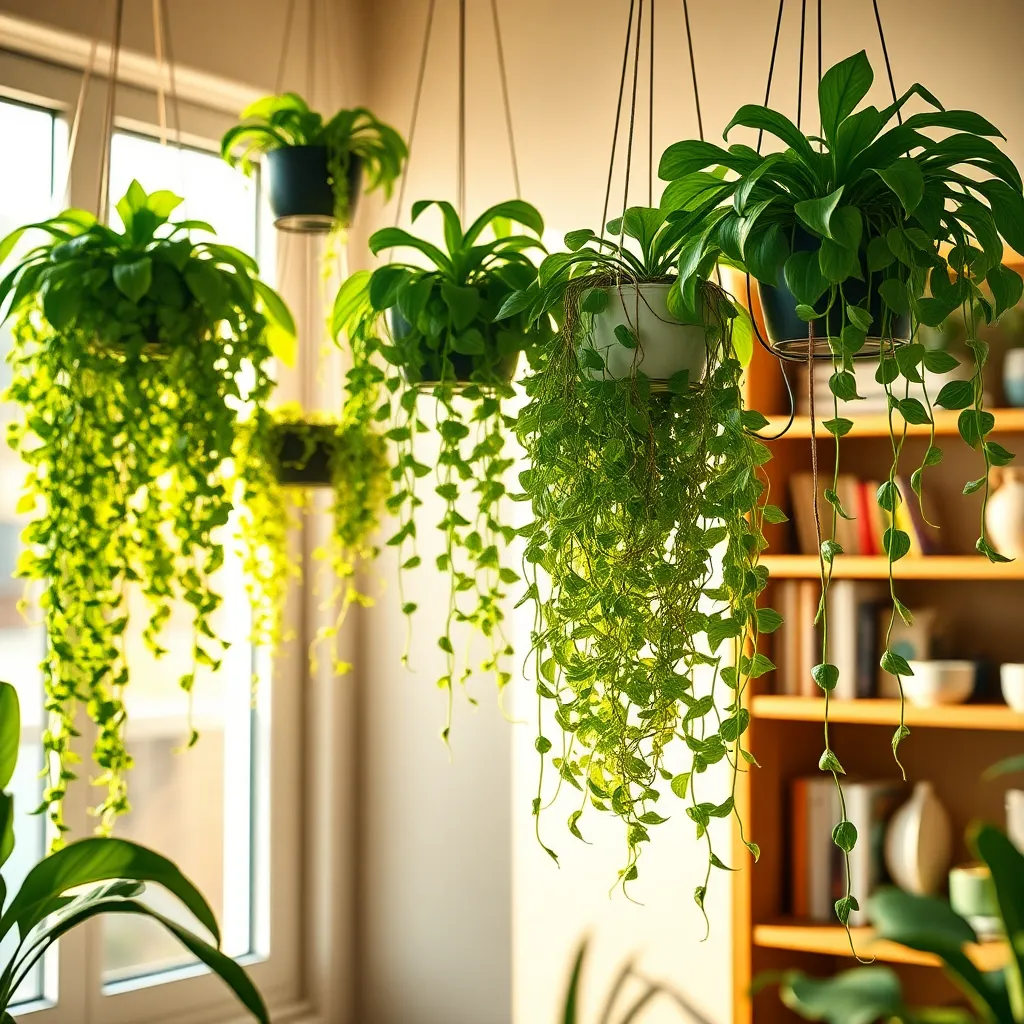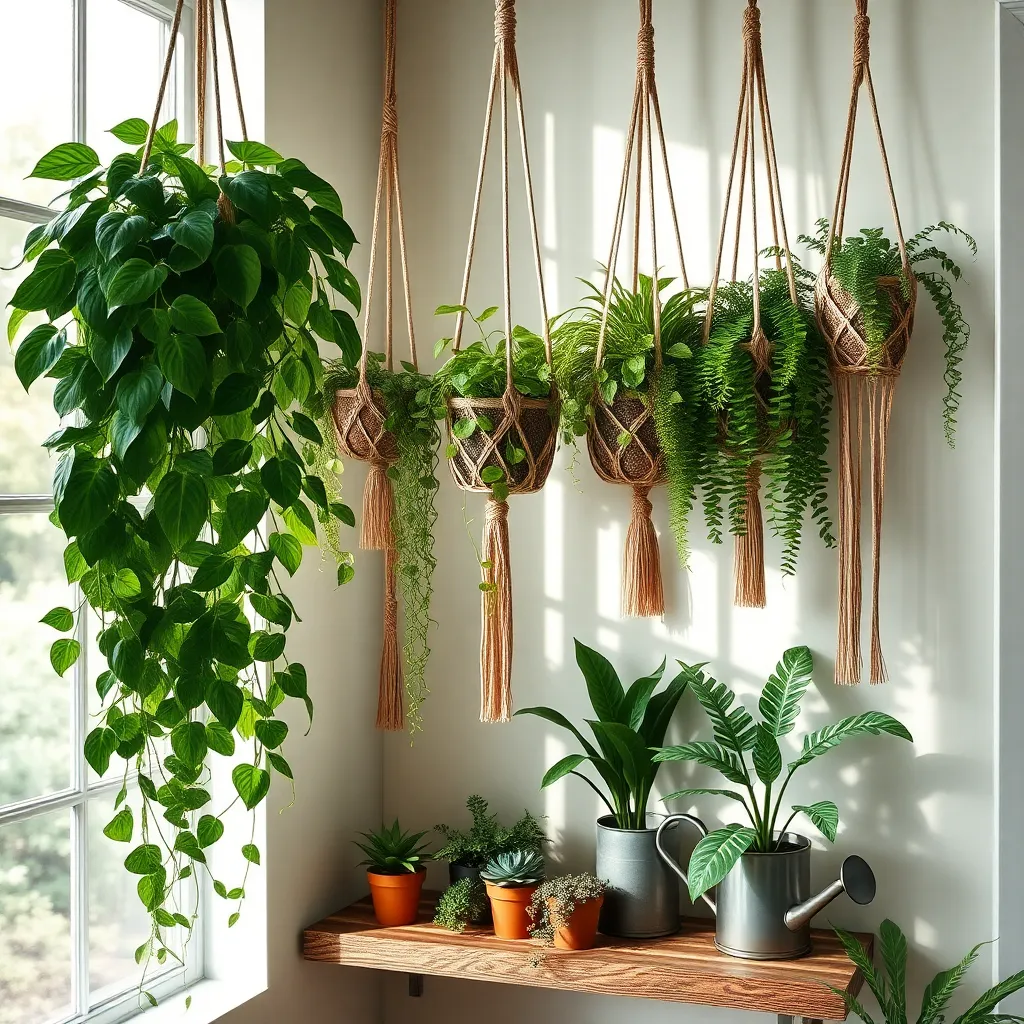Welcome to the world of creative hanging planters, where the magic of gardening knows no bounds and every indoor space can be transformed into a lush oasis. Whether you’re just starting out or have years of experience under your belt, this guide will inspire you to elevate your gardening game by bringing nature indoors in the most imaginative and rewarding ways.
In this guide, you’ll discover a curated selection of indoor plants perfect for hanging, each chosen for their beauty and adaptability to indoor environments. Not only will these plants add a touch of greenery and vibrancy to your home, but they also offer practical benefits like improved air quality and a boost to your mood.
By the time you’ve finished exploring these creative ideas, you’ll feel empowered to turn any corner of your home into a thriving plant sanctuary. The joy of watching your hanging planters flourish will be matched only by the satisfaction of knowing you’ve created a beautiful, personal retreat filled with nature’s wonders.
Choose Lightweight Hanging Containers

Choosing the right hanging container is essential for successful indoor gardening, especially when dealing with limited space. Opt for lightweight materials like plastic, fiberglass, or resin, which make it easier to hang and move your planters without compromising on aesthetics.
Lightweight containers not only ease the installation process but also reduce the risk of damage to walls and ceilings. Additionally, these materials often come with built-in drainage systems, which help prevent waterlogging and root rot in your plants.
For beginners, start with easy-care plants like pothos or spider plants, which thrive in most lighting conditions and are forgiving of occasional neglect. Hang them in lightweight baskets filled with well-draining potting mix, and water when the top inch of soil feels dry to the touch.
Advanced gardeners might explore incorporating self-watering systems into their lightweight hanging containers. These systems can help maintain consistent moisture levels, crucial for more demanding plants like orchids or ferns, which require specific humidity and watering schedules to thrive.
Install Sturdy Ceiling Hooks

To effectively support your indoor hanging planters, it’s crucial to install sturdy ceiling hooks. Begin by assessing the weight of your chosen containers, as this will dictate the type of hook required.
Heavy-duty hooks are advisable for larger planters, while lighter hooks may suffice for smaller setups. Use a stud finder to locate ceiling joists, ensuring your hooks are anchored securely.
Once you’ve identified a suitable spot, drill a pilot hole slightly smaller than the screw size of your hook. This step is essential to prevent wood splitting and to guarantee a firm grip for the hook.
After installation, test the hook’s strength by gently pulling downwards, confirming it can support the planter’s weight. If you plan to rotate your plants to optimize light exposure, consider using swivel hooks for ease of movement.
Use Adjustable Plant Hangers

Adjustable plant hangers are a versatile solution for indoor gardening, allowing you to easily change the height of your plants as they grow. This flexibility is especially useful if you have plants that require different light conditions at various stages of growth.
To get started, choose a high-quality adjustable hanger that can support the weight of your plant. Ensure the mechanism is smooth and easy to operate, which will make adjusting the height hassle-free.
Beginner gardeners will appreciate how adjustable hangers simplify plant care by making it easier to water and prune hanging plants. By lowering the plant to your level, you can avoid the risk of over-reaching and potential damage to both your plant and your ceiling.
For more advanced gardeners, these hangers allow for creative arrangements by mixing plants of different heights and light requirements in one area. Experiment with combinations of trailing vines and upright plants to add visual interest and diversity to your indoor space.
Mix Varied Plant Heights

Mixing varied plant heights in your hanging planters can create a dynamic and visually appealing display. Begin by selecting plants with different growth habits, such as trailing, upright, and bushy varieties, to add depth and interest.
Trailing plants like pothos or string of pearls can cascade beautifully over the edges of your planters. These plants not only add a soft, flowing effect but also thrive in moderate to bright indirect light, making them perfect for indoor environments.
Incorporate upright plants such as snake plants or peace lilies to add structure and height. These plants are known for their air-purifying abilities and require minimal care, needing only well-draining soil and infrequent watering.
For an advanced approach, consider layering plants with different light requirements by using adjustable hangers to ensure each plant receives the light it needs. Regularly rotate your planters to promote even growth, and remember to check the soil moisture weekly to adjust watering needs accordingly.
Incorporate Decorative Macramé Holders

Incorporating decorative macramé holders into your indoor garden setup can add an artistic touch while saving space. These holders are perfect for hanging plants near windows where they can receive ample light, helping to maximize your indoor planting area.
For beginners, start with easy-to-care-for plants like pothos or spider plants, which thrive in macramé holders. Ensure your chosen plant has a well-draining potting mix to prevent waterlogging, which is crucial for hanging planters.
Advanced gardeners might experiment with a variety of plant species, such as trailing succulents or ferns, which can create a lush, cascading effect. Consider the weight of the soil and plant combined when selecting your macramé holder to ensure it can support the load securely.
To maintain your plants in macramé holders, regular watering is essential, but be cautious of over-watering. A good rule of thumb is to water only when the top inch of soil feels dry, using a spray bottle for more controlled hydration.
Conclusion: Growing Success with These Plants
In exploring ‘Creative Hanging Planter Ideas For Indoors,’ we’ve uncovered five key relationship concepts: the importance of nurturing environments, the role of shared activities in bonding, the beauty of personalized touches, the significance of communication in coordinating shared spaces, and the value of growth and adaptability in relationships. These concepts not only enhance your living space but also strengthen the relational ties within it.
To bring these ideas to life, consider choosing one planter idea to implement today. Whether crafting a macramé holder together or selecting a unique pot that reflects your shared style, take this small step to enhance your environment and connection.
Remember, a healthy relationship is like a thriving plant; it requires attention, care, and the right environment to grow. Bookmark this article as a go-to resource for infusing creativity and connection into your home. By keeping these ideas at your fingertips, you’ll cultivate a space where both your plants and your relationships can flourish.
Embrace these concepts, and look forward to the growth and joy they will bring to your relationships. Your journey toward a more harmonious and loving home begins now!

